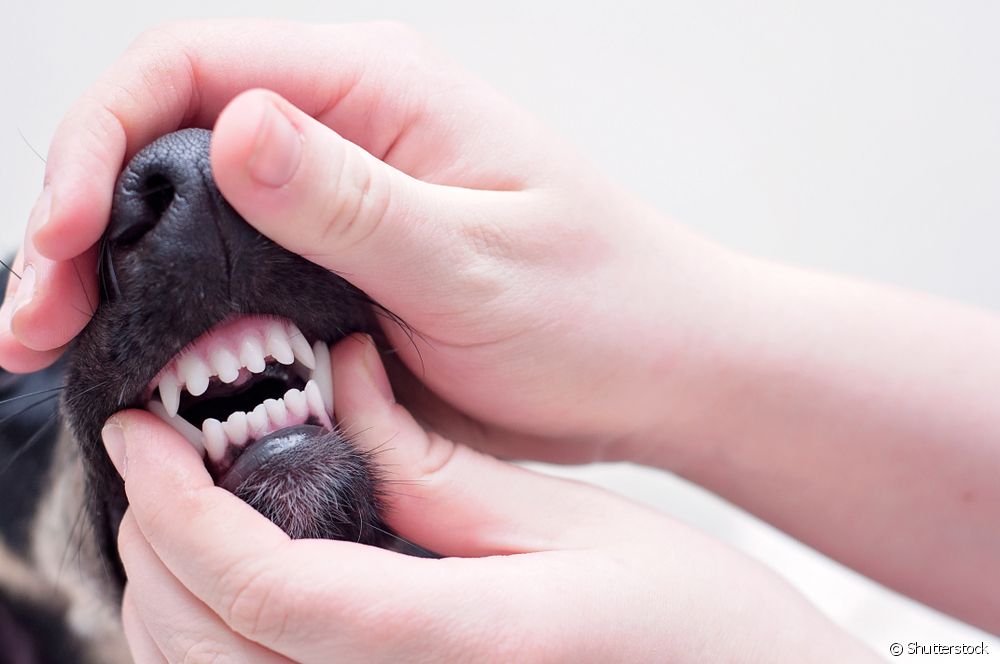Does your dog have bruxism? Veterinarian explains more about teeth grinding

Table of contents
Dogs grinding their teeth frequently is a strong indication of bruxism, a common condition in humans that causes toothache and other problems. Usually, the signs of bruxism are most intense during sleep and the causes are linked to stress, anxiety, neurological problems or malocclusion (abnormal alignment of the teeth). To understand more about the dog with bruxism,we talked to veterinary dentist Mariana Lage, who explained all the characteristics of the disorder.
Is dog teeth grinding a sign of bruxism?
Just like humans, a dog grinding its teeth while sleeping is one of the symptoms of the disorder. Characterized by the unhealthy meeting of the lower teeth with the upper ones, the habit of grinding teeth, even among dogs, can become painful and uncomfortable for the animal. An elderly dog grinding its teeth deserves a lot of attention, because at this stage the already weakened dentition canworsen, even causing tooth loss.
See_also: Botulism in dogs: learn all about the diseaseDog shaking teeth is not always a dental problem
Usually when owners notice their dog grinding their teeth, they soon associate it with dental problems and go in search of a pet dentist. Mariana Lage, however, says that these are not always the causes of bruxism in dogs: "It can be correlated with neurological problems and even gastritis ... there are numerous factors behind the disease." A stressed dog, for example, can alsotrigger teeth grinding in the long term.
"From the moment the animal has the habit of grinding its teeth, the recommendation is that it be evaluated by a veterinarian so that the cause of the problem can be identified. The evaluation with a clinician serves to rule out viral, neurological or gastroenteric possibilities, and then go to an odontologist ", explains the veterinarian.
An interesting detail is that, in addition to the causes, there are indicators that canine bruxism is more common in agitated dog breeds, such as:
- Labrador
- Golden Retriever
- German Shepherd

Dogs with bruxism can have serious consequences on their dentition
Inflammations, dogs with toothache, fractures or wear and even early loss of teeth are some sequelae of bruxism. Therefore, it is essential to treat the cause of the disorder in partnership with a pet dentist. "It is important that we make a correlation, if this reason is something that we can or cannot remove. From there, it is to follow up to assess what is going on.this can cause in dental terms", points out the specialist.
The general practitioner guides how to treat dog with bruxism
In the case of bruxism in dogs, how to treat? Well, unlike the treatment in humans, where the specialist doctor indicates the use of plates to correct the bite, in dogs the treatment ranges from behavioral care to the use of toys for dogs to bite (usually to strengthen and improve the dental arch). Walks and floral for dogs are also valid measures, buteverything will also depend on the underlying disease that triggered the bruxism. And for this, the dentist works together with the general practitioner. To maintain good oral health for the dog, it is essential that the guardian learns how to brush the dog's teeth the right way.
See_also: Dog senses guardian's pregnancy? See what we found out about it!

